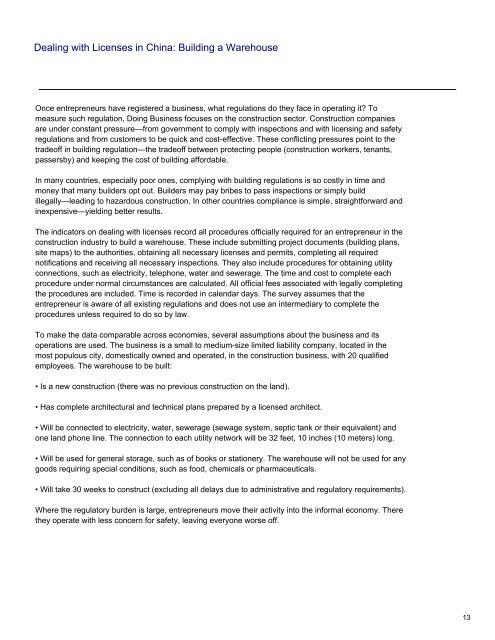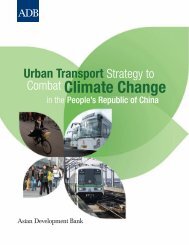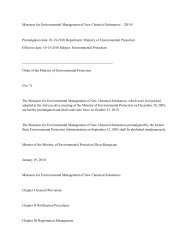View full report - NEEC
View full report - NEEC
View full report - NEEC
- No tags were found...
Create successful ePaper yourself
Turn your PDF publications into a flip-book with our unique Google optimized e-Paper software.
Dealing with Licenses in China: Building a WarehouseOnce entrepreneurs have registered a business, what regulations do they face in operating it? Tomeasure such regulation, Doing Business focuses on the construction sector. Construction companiesare under constant pressure—from government to comply with inspections and with licensing and safetyregulations and from customers to be quick and cost-effective. These conflicting pressures point to thetradeoff in building regulation—the tradeoff between protecting people (construction workers, tenants,passersby) and keeping the cost of building affordable.In many countries, especially poor ones, complying with building regulations is so costly in time andmoney that many builders opt out. Builders may pay bribes to pass inspections or simply buildillegally—leading to hazardous construction. In other countries compliance is simple, straightforward andinexpensive—yielding better results.The indicators on dealing with licenses record all procedures officially required for an entrepreneur in theconstruction industry to build a warehouse. These include submitting project documents (building plans,site maps) to the authorities, obtaining all necessary licenses and permits, completing all requirednotifications and receiving all necessary inspections. They also include procedures for obtaining utilityconnections, such as electricity, telephone, water and sewerage. The time and cost to complete eachprocedure under normal circumstances are calculated. All official fees associated with legally completingthe procedures are included. Time is recorded in calendar days. The survey assumes that theentrepreneur is aware of all existing regulations and does not use an intermediary to complete theprocedures unless required to do so by law.To make the data comparable across economies, several assumptions about the business and itsoperations are used. The business is a small to medium-size limited liability company, located in themost populous city, domestically owned and operated, in the construction business, with 20 qualifiedemployees. The warehouse to be built:• Is a new construction (there was no previous construction on the land).• Has complete architectural and technical plans prepared by a licensed architect.• Will be connected to electricity, water, sewerage (sewage system, septic tank or their equivalent) andone land phone line. The connection to each utility network will be 32 feet, 10 inches (10 meters) long.• Will be used for general storage, such as of books or stationery. The warehouse will not be used for anygoods requiring special conditions, such as food, chemicals or pharmaceuticals.• Will take 30 weeks to construct (excluding all delays due to administrative and regulatory requirements).Where the regulatory burden is large, entrepreneurs move their activity into the informal economy. Therethey operate with less concern for safety, leaving everyone worse off.13











